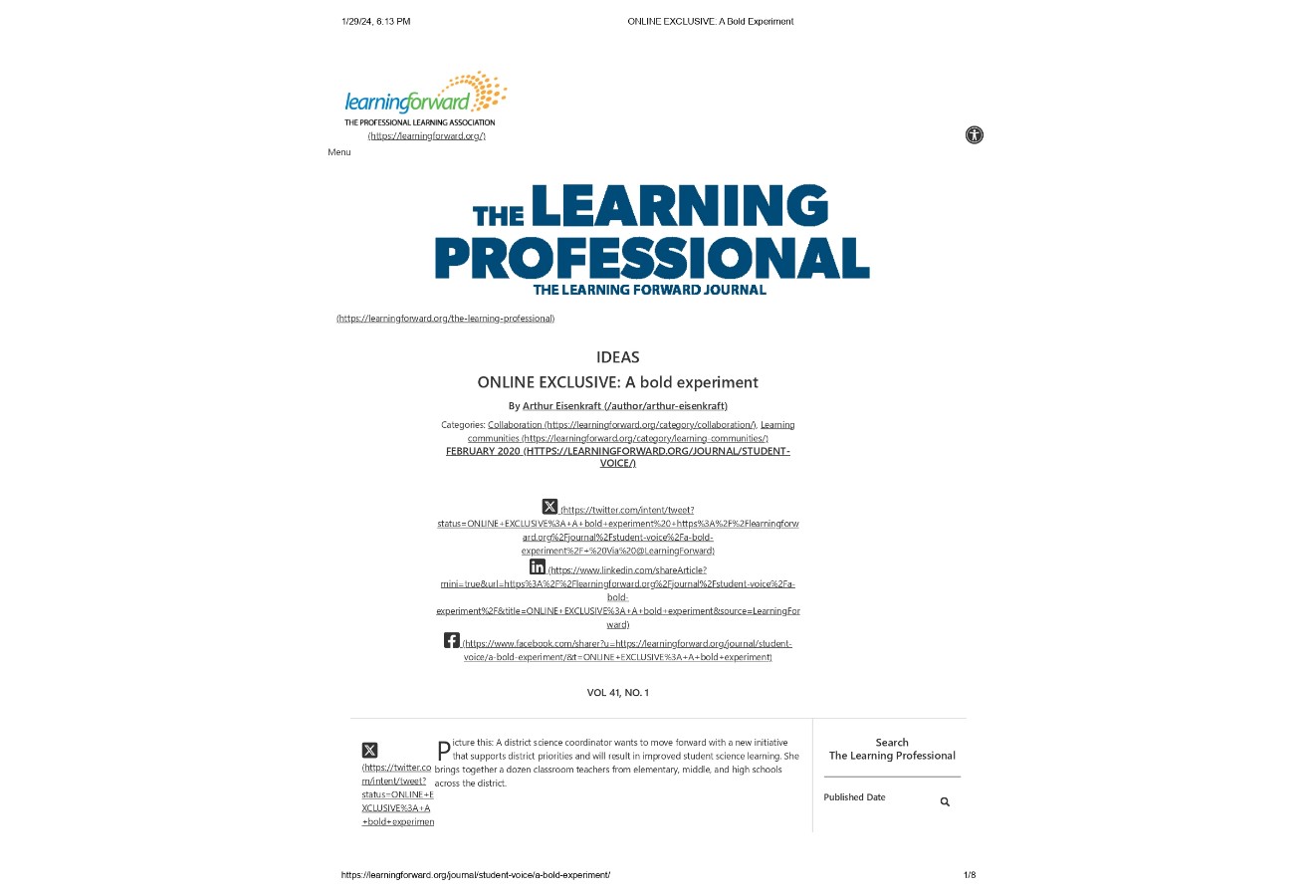
Year 1: Science teams learn together.
In Year 1 of the Science Education Fellowship, teachers engage in structured inquiry into their own teaching and growth using tools developed through educational research, such as lesson study, professional learning communities, and tuning protocols. They meet
regularly to discuss core topics of teaching and learning as well as local district initiatives. The heart of this work is meetings focused on reviewing their science teaching practices.
Semester 1: Vertical teams
In the fall semester, the cohort of 20 K-12 fellows is sorted into four vertical teams: life science, physics, chemistry, and environmental science. Each disciplinary team chooses a course of study that will include both a content focus and a specific research article that can inform instruction in that content. For example, the chemistry team may pick “properties of matter” as its content and a research article on cooperative learning. The physics team may choose “forces” as its content and a research article on student prior knowledge. Over the next few months, each fellow will teach and videotape one lesson in the content area and model how to apply the research to his or her classroom lesson. ONLINE EXCLUSIVE: A Bold Experiment prescribed tuning protocol, where fellows provide both warm and cool feedback on the observed lesson. The group then reviews classroom artifacts, including student work. This cycle is repeated for one lesson from each of the fellows over the fall semester. A benefit of vertical teaming is that fellows see the same content taught in lessons at different grade levels. All fellows begin to appreciate how understanding of a specific content piece spirals from early elementary school to high school. The fellows also better understand the research article by seeing it reflected in lessons at different grade levels. Fellows who discover through their own lessons that the same misconceptions regarding density occur in grades 3, 7, and 10 have a better appreciation of the research (e.g. on learning progressions) than someone who reads the article in isolation. Another positive outcome is the new respect that each fellow gains from seeing a colleague teach at another level. High school fellows are surprised to see that 1st-grade students can make graphs and take data. The elementary fellows, in turn, see how the foundation that they are setting supports the students in the following years. They also appreciate how much they have to share with the secondary fellows.
